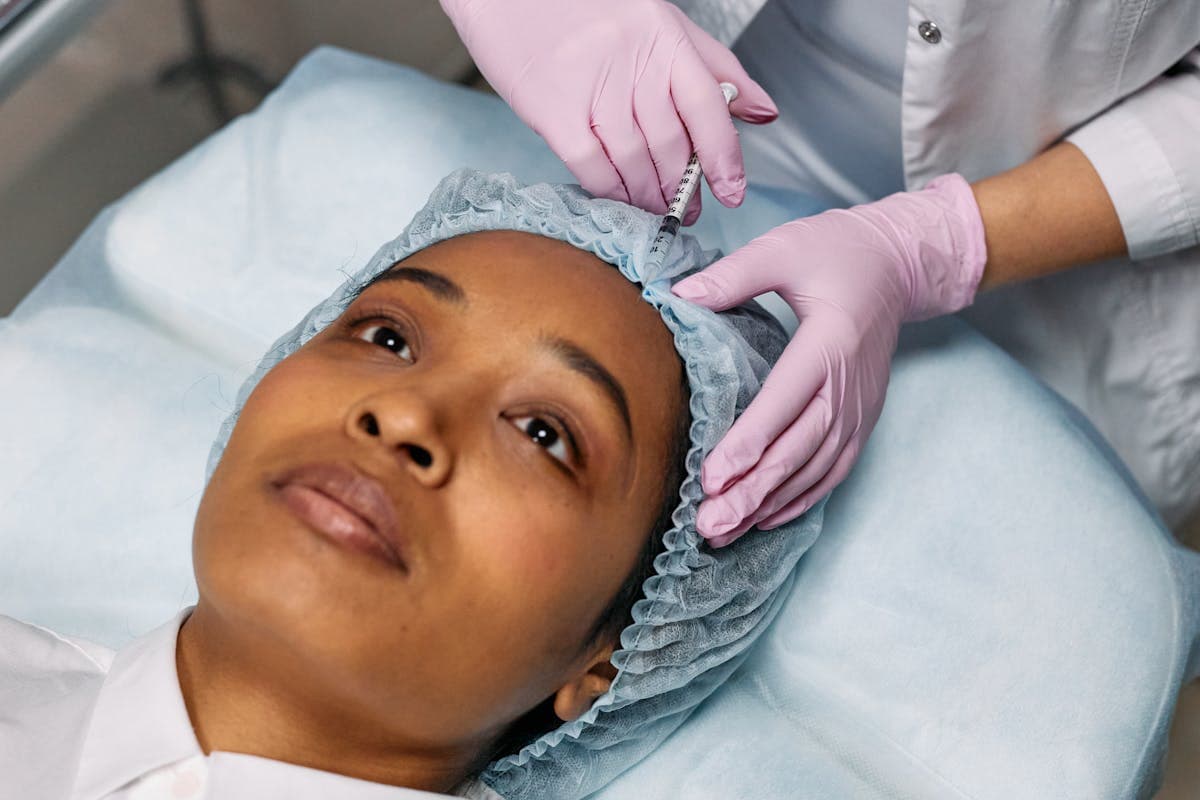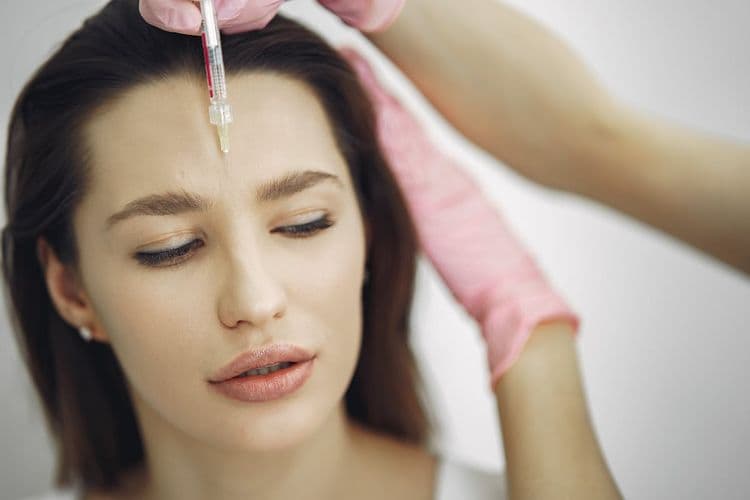Despite the popularity of dermal fillers in cosmetic procedures, their potential side effects remain a pertinent discussion. While reactions such as swelling and bruising are often mild and temporary, more serious complications like infections or allergic reactions could develop, leading to potentially severe consequences. The rarity of these complications does not diminish their significance, and the importance of awareness and proper aftercare cannot be understated. As we unpack these potential risks, we invite you to join this critical conversation on the side effects of dermal fillers.
Understanding Dermal Fillers
While dermal fillers are widely recognized as an effective method for smoothing wrinkles and enhancing facial contours, it is vital to understand their composition and how they function. Dermal filler types are primarily categorized into biodegradable and non-biodegradable, each with its unique properties and longevity. The most common biodegradable fillers include hyaluronic acid and poly-L-lactic acid, which are naturally absorbed by the body over time. Non-biodegradable fillers, such as polymethylmethacrylate, provide a more permanent solution. Treatment techniques vary, with most procedures involving the injection of the chosen filler beneath the skin’s surface. This process effectively restores volume, improves skin hydration, and promotes collagen production, resulting in a more youthful appearance. Understanding these factors is important for the best treatment outcomes.
Common Side Effects Post-Treatment
Despite the numerous benefits of dermal fillers, it is also necessary to contemplate the potential side effects following treatment. Common post-treatment side effects typically include swelling, redness, pain, bruising, and tenderness at the injection site. These symptoms are generally mild and subside on their own within a week. The recovery timeline may vary, depending on the individual’s skin type, the area treated, and the type of filler used. Strict adherence to post-treatment care guidelines, such as avoiding strenuous activity, excessive sun or heat, and alcohol can help minimize these side effects. If symptoms persist beyond the expected recovery timeline, or if you experience severe side effects, it’s essential to contact your healthcare provider or the clinic where you received the treatment.
Allergic Reactions to Dermal Fillers
Allergic reactions to dermal fillers, although rare, can occur and need to be promptly identified and managed. The identification of allergic reactions, characterized by symptoms such as redness, swelling, itchiness, and in severe cases, difficulty breathing, is critical in the immediate post-treatment phase. This segment will further explore the management of these allergic symptoms, and prevention strategies to mitigate future occurrences.
Identifying Allergic Reactions
How can one identify an allergic reaction to dermal fillers? Allergic responses to these substances are typically immediate, presenting within a few hours or days post-treatment. Symptoms can vary depending on the individual’s skin sensitivity and specific reaction triggers. The most common indications of an allergic reaction are redness, itching, and swelling at the injection site, coupled with a rash or hives. In severe cases, individuals may experience difficulty breathing or a drop in blood pressure. Additionally, small, persistent lumps or nodules, indicative of granulomas, can also manifest due to an immunogenic response. It is worth noting that these symptoms can also be indicative of an infection rather than an allergy, which necessitates immediate medical attention.
Managing Allergic Symptoms
In the unfortunate event of an allergic reaction to dermal fillers, immediate and appropriate management is essential to alleviate symptoms and prevent further complications. Allergy management typically involves the administration of antihistamines and corticosteroids to counteract the inflammatory response. These medications work by blocking the body’s histamine-producing cells, thereby offering symptom relief. It is also important to monitor the patient’s key signs and symptoms closely. In severe cases, where symptoms persist or escalate, hospitalization may be necessary for further medical intervention. Furthermore, the treating physician should record the allergic reaction in the patient’s medical history for future reference. This will aid healthcare professionals in making informed decisions about the use of dermal fillers in the patient’s subsequent treatments.
Preventing Future Reactions
Given the potential for adverse reactions, as previously discussed, it is of utmost importance to proactively strategize for the prevention of future allergic responses to dermal fillers. A vital part of this strategy is the pre-treatment consultation, where the clinician can assess the patient’s medical history, carry out skin tests, and discuss potential risks. This process plays a pivotal role in identifying patients at risk and mitigating allergic reactions. Alongside this, patient education is imperative. Informing patients about the nature of the fillers, possible side effects, and post-procedure care can markedly minimize potential risks. Additionally, patients should be advised to inform their clinician of any changes post-procedure promptly, as early intervention can prevent severe complications.
Risk of Infection
While dermal fillers are generally considered safe, there exists a potential risk of infection. Infection prevention is vital, and can be achieved through strict adherence to aseptic techniques during the procedure, in conjunction with the use of sterilized equipment. It’s also essential that the patient maintains good hygiene post-procedure to further minimize this risk. However, despite preventive measures, the risk of infection is not completely eliminated. Symptoms may include redness, swelling, pain at the injection site, fever, and in severe cases, abscess formation. Treatment options are dependent on the severity and type of infection, which may range from oral antibiotics for minor infections, to hospital admission and intravenous antibiotics for severe cases. Always consult a healthcare professional immediately if symptoms of infection occur.

The Possibility of Scarring
Scarring is a potential adverse outcome following dermal filler procedures due to the skin’s natural response to injury. The process of scar formation, which involves the intricate interplay of cellular and molecular events, can be influenced by multiple factors including individual’s genetic predisposition, and the technique and type of dermal fillers used. Developing an understanding of this process is integral to devising strategies for scar prevention and treatment, thereby minimizing this risk associated with dermal fillers.
Understanding Scar Formation
A significant minority of patients who opt for dermal fillers may experience scar formation, an unwanted side effect that can impact the aesthetic outcome of the procedure. This eventuality is largely due to the body’s natural response to trauma, kick-starting the healing process which can sometimes lead to excessive fibrous scar tissue development. This tissue differs from normal skin, with a distinct, often irregular texture and appearance, potentially compromising the aesthetic aims of the filler procedure. Commonly, scar formation occurs in the event of improper technique, overcorrection, or adverse individual physiological responses. On a cellular level, the healing process entails complex interactions among various cells, growth factors, and extracellular matrix proteins, leading to the formation of scar tissue. Understanding this mechanism is integral to predicting which patients may be more prone to scarring after dermal filler procedures.
Prevention and Treatment
To mitigate the risk of scar formation following dermal filler procedures, several preventative measures and treatment options are available. A thorough pre-treatment consultation is essential for evaluating individual risk factors and skin type.
- Pre-Treatment Consultation: This is a step to identify potential risks and inform patients about the procedure.
- Proper Injection Techniques: Utilizing correct techniques minimizes trauma to the skin, reducing the likelihood of scarring.
- Post-Treatment Care: It includes avoiding sun exposure, using prescribed creams, and following a specific skincare routine.
- Treatment of Complications: If scarring occurs, treatments such as laser therapy, topical retinoids, or surgical revision can be beneficial.
Incorporating these strategies can effectively prevent and manage scarring after dermal fillers.
Serious Complication: Vascular Occlusion
While dermal fillers are generally safe, a rare but serious complication that can occur is vascular occlusion. This medical event happens when the dermal filler is accidentally injected into a blood vessel, causing a vascular compromise. This blockage can restrict blood flow, leading to tissue death if not promptly addressed. Symptoms can include abrupt pain, blanching, and changes in skin color. Treatment options for vascular occlusion can vary, but typically involve the use of hyaluronidase, a substance that can dissolve certain types of fillers. Other treatment possibilities may include warm compresses, aspirin, and in severe cases, surgical intervention. It is essential to understand the risks and maintain open communication with your healthcare provider to promptly address any concerns.
The Longevity of Side Effects
Although dermal fillers are a popular option for enhancing facial aesthetics, understanding the longevity of their side effects is essential. The side effects timeline can be variable, with duration effects ranging from temporary to long-lasting.
- Immediate side effects: These typically occur within 24 hours post-injection, including redness, swelling, or bruising at the injection site.
- Short-term side effects: Manifest within a week and may include infection or allergic reactions.
- Medium-term side effects: Occur within months, such as lumps or granulomas.
- Long-term side effects: These are rare but may include scarring or skin discoloration.
Understanding this timeline can help patients and physicians make informed decisions about the use of dermal fillers.
Ways to Minimize Potential Risks
Given the potential side effects associated with dermal fillers, implementing strategies to minimize risks can make this aesthetic treatment safer and more comfortable for patients. Central to these strategies is patient education, which guarantees individuals understand potential adverse reactions and the importance of post-treatment care. Thorough pre-treatment consultation is also an essential element, allowing practitioners to assess patient suitability, discuss expectations and address concerns. Additionally, it is imperative to utilize products approved by health authorities and to verify they are administered by certified professionals in sterile conditions. Patients should be advised to avoid strenuous activities and excessive heat for a brief period post-treatment. These strategies, when combined, considerably reduce the probability of complications, enhancing patient satisfaction and treatment outcomes.
Frequently Asked Questions
Can Dermal Fillers Affect My Overall Health in the Long Run?
Long term effects of any medical procedure, including aesthetic ones, can impact overall health. Specific health considerations depend on individual circumstances, therefore it is essential to consult with a medical professional beforehand.
Are There Any Specific Dietary Restrictions Post-Treatment?
Post-treatment, no specific dietary restrictions are typically necessary. However, maintaining a balanced diet will support overall health. Emphasis should be on hydration importance, as adequate water intake can optimize the results and longevity of the treatment.
How Often Should I Get Dermal Fillers for Optimal Results?
The frequency of dermal filler treatments for ideal results varies per individual. Consultation with a medical professional is essential to determine filler frequency and treatment maintenance based on personal skin condition and desired aesthetic outcome.
Are There Any Exercises to Avoid After Receiving Dermal Fillers?
Post treatment precautions, including exercise restrictions, are essential for filler maintenance. Vigorous activities, especially involving facial movements, should be avoided for 24-48 hours following dermal filler treatment to prevent migration or dissipation of the filler.
Does Insurance Typically Cover the Cost of Dermal Fillers?
Typically, insurance policies do not cover the cost of dermal fillers, as they are often classified as elective cosmetic procedures. It’s advised to check with your specific provider to understand your coverage for such treatment costs.


